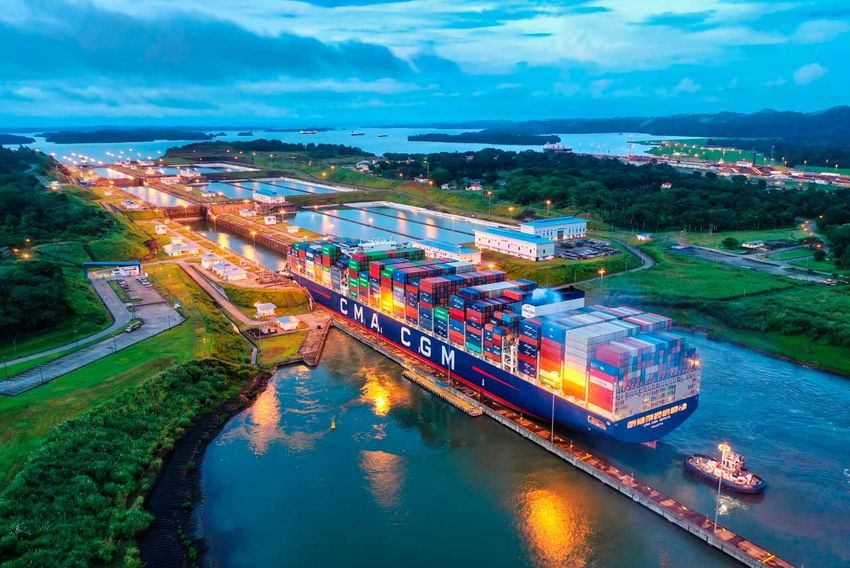The Panama Canal is one of the greatest engineering marvels of all time, connecting the Atlantic and Pacific Oceans and transforming global trade. Stretching 50 miles (80 km) across the Isthmus of Panama, this waterway saves ships thousands of miles of travel around South America’s Cape Horn. But how did engineers achieve this incredible feat? Let’s explore the history, challenges, and innovative solutions that made the Panama Canal possible.
1. Why the Panama Canal Was Needed 🌎
Before the canal was built, ships traveling between the Atlantic and Pacific Oceans had to navigate around the southern tip of South America, a dangerous and time-consuming route. The idea of creating a shortcut through Panama was proposed as early as the 16th century, but the technology didn’t exist to make it a reality.
By the late 19th century, the rise of global trade made the need for a canal more urgent. A shorter, safer route would reduce travel time, lower shipping costs, and boost economic growth worldwide.
2. The First Attempt: The French Effort 🇫🇷
In the 1880s, a French company led by Ferdinand de Lesseps—famous for building the Suez Canal—began construction. Their plan was to create a sea-level canal, similar to the Suez. However, Panama’s mountainous terrain, tropical climate, and deadly diseases like malaria and yellow fever made the project impossible with the technology of the time.
After nearly a decade of work and the loss of thousands of lives, the French effort ended in failure. However, their attempt laid the groundwork for future success by mapping the region and beginning excavation.
3. The American Success 🇺🇸
In 1904, the United States took over the project under the leadership of President Theodore Roosevelt. Learning from the French failure, the Americans made critical changes to the plan and approach:
- Disease Control 🦟: Dr. William Gorgas led efforts to eliminate mosquitoes, which spread malaria and yellow fever. By draining swamps, fumigating buildings, and using mosquito nets, they significantly reduced disease and improved workers’ health.
- Lock System Design 🚢: Instead of a sea-level canal, American engineers designed a series of locks that raised and lowered ships as they crossed Panama’s mountainous terrain. This approach was more practical, faster to build, and safer for ships.
- Massive Excavation 🚧: Engineers used steam shovels, dynamite, and railways to remove millions of cubic yards of earth, carving a path through mountains like the Culebra Cut.
Despite the challenges, the Panama Canal was completed in 1914, forever changing global transportation and trade.
4. How the Panama Canal Works ⚙️
The canal uses a system of locks to lift ships 85 feet (26 meters) above sea level, allowing them to cross the Isthmus of Panama before lowering them back to sea level on the other side. Here’s how it works:
- Entering the Locks 🚢: Ships enter the first lock chamber, and gates close behind them.
- Rising to the Top 📈: Water is pumped into the chamber, raising the ship to the next level.
- Crossing Gatun Lake 🌊: After passing through three locks, ships sail across Gatun Lake, an artificial lake created to provide water for the locks.
- Descending to the Ocean 📉: On the other side of the canal, ships pass through another series of locks that lower them back to sea level.
This lock system uses gravity to move water, making it highly efficient and sustainable.
5. Challenges Overcome by Engineers 🏗️
Building the Panama Canal was no easy task. Engineers faced numerous challenges, including:
- Geography 🌄: Cutting through the mountainous terrain of the Isthmus of Panama required massive excavation and blasting.
- Tropical Climate ☀️🌧️: Heavy rains caused landslides, flooding construction sites and slowing progress.
- Disease 💉: Controlling malaria and yellow fever was critical to ensuring the health and safety of workers.
- Logistics 🚂: Moving millions of tons of earth required extensive use of steam-powered trains, steam shovels, and other machinery.
Despite these obstacles, the canal was completed on time and within budget, a testament to the skill and determination of the engineers and workers involved.
6. The Impact of the Panama Canal 🌍
The Panama Canal revolutionized global trade by creating a faster, safer route between the Atlantic and Pacific Oceans. Ships traveling from New York to San Francisco saved more than 8,000 miles compared to the route around Cape Horn. This dramatically reduced shipping costs, boosted international trade, and contributed to the growth of the global economy.
Today, more than 12,000 ships pass through the canal each year, carrying everything from consumer goods and raw materials to vehicles and electronics. The canal also plays a crucial role in global supply chains, supporting trade between Asia, North America, and Europe.
7. Modern Upgrades: The Panama Canal Expansion (2016) 🚢📏
To accommodate the growing size of modern ships, the Panama Canal underwent a major expansion that opened in 2016. This $5.25 billion project added a new set of larger locks, known as the Panama Canal Expansion (or the Third Set of Locks), which can handle ships up to 1,200 feet long—nearly three times the size of the largest ships that could pass through the original locks.
This expansion has further increased the canal’s capacity, reduced shipping costs, and strengthened Panama’s role as a global trade hub.
8. Environmental and Social Impact 🌱
While the Panama Canal has brought economic benefits to Panama and the world, its construction and operation have also had environmental and social impacts. The creation of Gatun Lake flooded large areas of rainforest, displacing local communities and wildlife. However, the lake now serves as an important freshwater reservoir, supporting both the canal and Panama’s growing population.
Efforts are ongoing to balance the canal’s economic benefits with environmental conservation, including reforestation projects and measures to protect local wildlife.
9. Conclusion ✅
The Panama Canal is a testament to human ingenuity and determination. By overcoming geographical, technological, and health challenges, engineers created a shortcut that connects two oceans and revolutionized global trade. More than a century after its completion, the canal continues to play a vital role in the world economy, and recent expansions ensure that it will remain essential for generations to come. 🌎🚢


